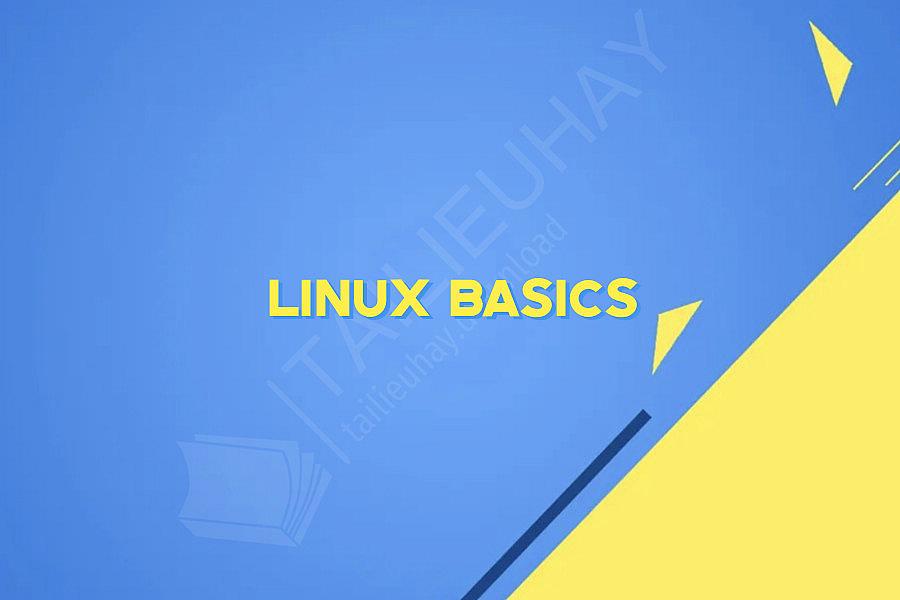Linux Basics

Linux Basics – Understanding the Fundamentals
Linux is an open-source operating system that has been adopted by numerous organizations and users around the world due to its flexibility, security, and cost-effectiveness. Whether you are a seasoned IT professional or a beginner trying to learn the basics of Linux, understanding the fundamentals is essential. In this article, we will discuss the key concepts that every Linux user should understand.
1. Terminal Basics
The terminal is the most important tool in Linux. It is a command-line interface that allows users to interact with the operating system. The terminal can be accessed through the built-in terminal application or the command prompt. Commands are typed into the terminal, and the computer will execute them.
2. Filesystem Hierarchy Standard
The Filesystem Hierarchy Standard (FHS) is the directory structure used by Linux. Each file and directory is located under the root directory, which is represented as a forward slash (/). The directories include the root directory, boot, bin, dev, home, lib, media, mnt, opt, proc, run, sbin, srv, tmp, usr, var, and more. Understanding the FHS is vital for finding and storing files in the proper location.
3. Users and Permissions
Linux has a strong security function that consists of user accounts and permissions. A user account is used to log in and access the system, while permissions are set on files and folders to control access. There are three types of permissions for files and directories - read, write, and execute. Understanding the permission model is crucial for managing and securing a Linux system.
4. Package Management
Linux uses a package management system that manages the installation and removal of software packages. The two most common package management systems are Advanced Package Tool (APT) and Yellowdog Updater Modified (YUM). Understanding how to use the package management system is essential for installing and managing software on a Linux system.
5. Shell Scripting
Shell scripting is a programming language used in Linux that can automate tasks. Shell scripts are used to execute a set of instructions in a specified order. Shell scripting allows users to create complex processing pipelines that automate repetitive tasks. Understanding shell scripting is an essential skill for automating tasks on Linux.
In conclusion, Linux is a powerful operating system that offers many advantages to users, including flexibility, security, and cost-effectiveness. Understanding the fundamentals of Linux is vital for optimizing its many features. The above concepts are only a few of the numerous elements that need to be learned when working with Linux. With the proper knowledge, Linux can be an excellent tool for the most complex applications.
Linux is an open-source operating system that has been adopted by numerous organizations and users around the world due to its flexibility, security, and cost-effectiveness. Whether you are a seasoned IT professional or a beginner trying to learn the basics of Linux, understanding the fundamentals is essential. In this article, we will discuss the key concepts that every Linux user should understand.
1. Terminal Basics
The terminal is the most important tool in Linux. It is a command-line interface that allows users to interact with the operating system. The terminal can be accessed through the built-in terminal application or the command prompt. Commands are typed into the terminal, and the computer will execute them.
2. Filesystem Hierarchy Standard
The Filesystem Hierarchy Standard (FHS) is the directory structure used by Linux. Each file and directory is located under the root directory, which is represented as a forward slash (/). The directories include the root directory, boot, bin, dev, home, lib, media, mnt, opt, proc, run, sbin, srv, tmp, usr, var, and more. Understanding the FHS is vital for finding and storing files in the proper location.
3. Users and Permissions
Linux has a strong security function that consists of user accounts and permissions. A user account is used to log in and access the system, while permissions are set on files and folders to control access. There are three types of permissions for files and directories - read, write, and execute. Understanding the permission model is crucial for managing and securing a Linux system.
4. Package Management
Linux uses a package management system that manages the installation and removal of software packages. The two most common package management systems are Advanced Package Tool (APT) and Yellowdog Updater Modified (YUM). Understanding how to use the package management system is essential for installing and managing software on a Linux system.
5. Shell Scripting
Shell scripting is a programming language used in Linux that can automate tasks. Shell scripts are used to execute a set of instructions in a specified order. Shell scripting allows users to create complex processing pipelines that automate repetitive tasks. Understanding shell scripting is an essential skill for automating tasks on Linux.
In conclusion, Linux is a powerful operating system that offers many advantages to users, including flexibility, security, and cost-effectiveness. Understanding the fundamentals of Linux is vital for optimizing its many features. The above concepts are only a few of the numerous elements that need to be learned when working with Linux. With the proper knowledge, Linux can be an excellent tool for the most complex applications.
- Mật khẩu giải nén: tailieuhay.download (nếu có)
Khóa Học Cùng Chủ Đề
Khóa học Trello
Luyện thi chứng chỉ quốc tế ISTQB cho Tester
Introduction to the Course
Build an Artificial Neural Network to Recognise Images using Keras - Tensorflow
1 Use Tensorflow to Classify Handwritten Digits
1 Serving a Tensorflow Model through a Website
1 Next Steps
Predict Movie Box Office Revenue with Linear Regression
Python Programming for Data Science and Machine Learning
Introduction to Optimisation and the Gradient Descent Algorithm
Predict House Prices with Multivariable Linear Regression
Pre-Process Text Data for a Naive Bayes Classifier to Filter Spam Emails Part 1
Train a Naive Bayes Classifier to Create a Spam Filter Part 2
Test and Evaluate a Naive Bayes Classifier Part 3
Introduction to Neural Networks and How to Use Pre-Trained Models